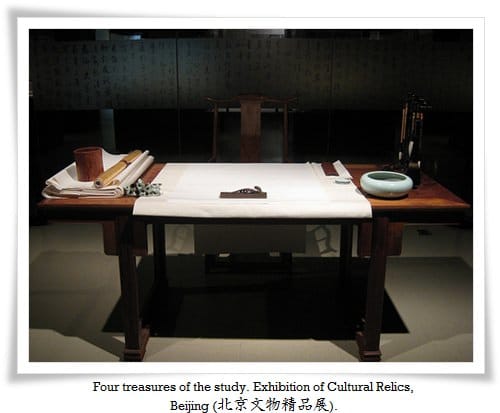There are many tools that calligraphers use (penholders, brush pots, ink boxes, desk mats, paperweights, seals and seal boxes, raw materials, etc). However, four of them are essential to this art, not only because of their necessity, but also due to their symbolic meaning. They are called “four treasures of the study” (文房四宝, bunbou shihou).
The most important of them all is the brush (筆, fude). It is an extension of the calligrapher’s body and soul. It is said that sho is written with the heart and not with a brush, and that the brush becomes the very soul of the artist. Consequently, one does not write by controlling his brush, but rather by steadying one’s inner self. The brush is considered to be a living entity, and it is deeply respected here in the Far East.
The second treasure is the inkstone (硯, suzuri). The soul of the calligrapher’s studio, which also may be referred to as doujou (道場, lit. “a place of the path”), thus a place where one finds and cultivates his way (of life).The inkstone symbolizes a tiny universe. The “hill” (temple) is where the ink is grinded, the “pond” where ready made ink is stored, and the “shore” separates them both. If taken care of properly, the life span of an inkstone is infinite.
Paper (紙, kami) and ink (墨, sumi) are the remaining two treasures. They underline the impermanence of things in nature, which further amplifies nature’s beauty. White paper stands for Yang (陽) forces of the Universe, whereas the black ink balances them by means of its Yin (陰) nature. Together they design perfect harmony and bring aesthetic balance into our lives through a calligraphic work.
The four treasures of the study were often themes of poems, paintings and calligraphy in ancient China. After all, it is thanks to them that we may be blessed with eternal beauty of sho.

